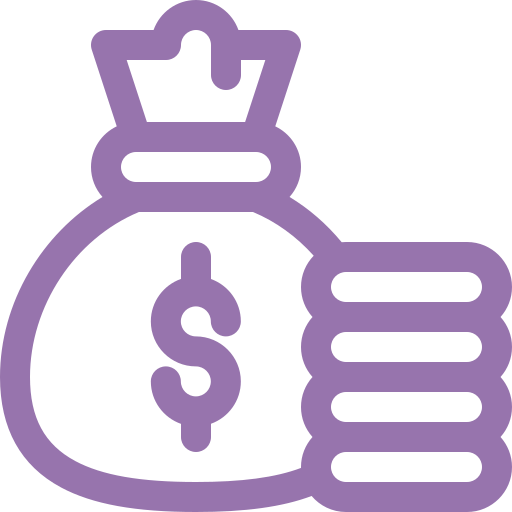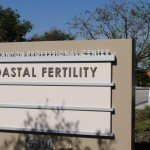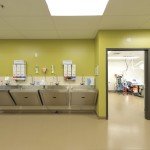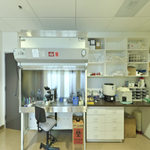About
Success
Treatment
Financial
Resources
Blog
Contact
Site Tools

Trigger Shot for IVF and Its Importance in Egg Quality

Trigger shot palys an important role in IVF treatment. The purpose of an IVF trigger shot is to send the eggs into a state of reproductive cell division called meiosis (also known as maturation division), during the 36-hour period preceding ovulation or retrieval.
The timing and efficiency of this process determine the quality of eggs that are retrieved and used in embryo creation and the outcome of the cycle.
When it comes to ovulation induction during the IVF treatment, we should choose and implement the trigger shot with utmost care. It is one of the most important decisions a physician must make as the trigger shot greatly affects the success rate of the IVF cycle.
Let us see how IVF trigger shot works and some common medications used for this purpose.
How the Trigger Shot Works for IVF
Gonadotropin Simulation
The trigger shot in actuality is human chorionic gonadotropin (hCG), a hormone that signals the follicles to rupture and release an egg.
In an ovarian stimulation cycle, gonadotropic hormones such as FSH and LH stimulate the ovaries for egg development in order to achieve pregnancy.
The trigger shot must be administered approximately 36 hours before IVF egg retrieval as the timing is crucial for the success of the entire IVF process. This trigger shot comprises of one of three medications:
- Urinary derived hCG (hCGu) shot such as Noravel, Pregnyl, and Profasi
- Recombinant hCG (hCGr) shot such as Ovidrel shot
- Agonist trigger shot such as Lupron as it provokes a surge in the release of LH upon being injected
Meiosis of Egg Cells
As said earlier, the purpose of the trigger shot in IVF treatment is to send eggs into a reproductive division known as meiosis.
During meiosis, the objective is to decrease the number of chromosomes in the eggs from 46 to 23 prior to egg retrieval or ovulation. Trigger shots expel half of the chromosomes from the egg’s nucleus in a membranous envelopment.
This so-called first polar body comes to lie immediately under the envelopment of the egg in a region known as perivitelline space. Here it seems as if the cells surrounding the egg are removed through microsurgery, but they can also erode on their own.
Microscopic Visualization
Microscopic visualization of the polar body confirms that the eggs are mature, meaning it has gone through meiosis. However, it provides no assurance that there are only 23 chromosomes remaining in the egg’s nucleus.
If exactly 23 chromosomes are not present in the nucleus of the fertilized egg, it will be unable to create a euploid embryo (one with 46 chromosomes).
Note: An aneuploid embryo is one that has an irregular number of chromosomes (more or less than 46) and is incapable of creating a healthy baby.
Hence, the dosage, method, and administration of the trigger shot affect the potential to yield mature quality eggs. The said trigger shot factors also represent a rate-limiting step in ovulation induction specifically for the IVF treatment cycle.
Types of Trigger Shot: Urinary vs. Recombinant hCG or Ovidrel
Previously, the standard method used to initiate the IVF trigger shot was through the administration of 10,000 units of hCGu. More recently, Ovidrel trigger shot, a recombinant form of hCG, has been introduced given in in 250 mcg doses.
Ovidrel trigger shot is an injectable medication that can be used by itself or in a combination with other fertility drugs. Apart from IVF, it can also be used to increase the chances of success during timed sexual intercourse, and an intrauterine insemination (IUI) cycle.
Using Trigger Shot in a Timed Intercourse
A trigger shot is often utilized for timed intercourse or SMEP. Once the eggs reach the optimal development stage, a trigger shot is given, that prompts ovulation within 36–42 hours.
After the trigger shot is administered, the couple is instructed to have intercourse either daily or every other day for three days.
However, if you are taking the shot as a part of your ovulation induction protocol, your doctor will guide you on when and how to take it synchronized to other medications and procedures.
Using Trigger Shot for IUI
A trigger shot can also be used for Intrauterine Insemination or IUI cycle when the follicle is a minimum of 20 mm with the uterine lining being at least 7 mm. Typically, Ovidrel costs around $100–$200 depending on the pharmacy you are visiting.
Shortfall
Experience suggests that 250 mcg is not equivalent in biological potency to 10,000 units of hCG. The potency is probably only 50% to 70% as compared to 10,000 doses of hCGu. This might not be enough to fully promote meiosis, especially in cases where a woman has numerous follicles.
For this reason, it’s firmly believed that the dosage should be doubled to 500 mcg when using hCGr for “trigger shot.” At this dosage, it will have an effect equivalent to 10,000 units of hCGu. Having said this, it is unnecessary to supplant hCGu with hCGr since the latter is more expensive and is no more potent than the former.
Dosage of hCG Trigger Shot
Many clinicians, when faced with risks of OHSS developing, deliberately elect to reduce the dosage of hCG administered as trigger shot. Doing so significantly reduces the possibility of the risk of developing critical OHSS.
However, a low dose of hCG (5,000 units) is likely to be inadequate to optimize the efficiency of meiosis, especially in the case where there are numerous follicles.
Use of hCG Trigger Shot vs. Agonist
It has been suggested that the use of an agonist, such as Lupron, as a trigger shot in women at risk of developing severe ovarian hyperstimulation syndrome, could potentially reduce the risk of the condition becoming critical.
This is why many prefer to trigger meiosis with Lupron rather than the use of hCG. Lupron promptly causes the woman’s pituitary gland to expunge a large amount of LH over a short period of time. It’s this surge that triggers meiosis. However, there’s a problem with this approach.
It’s hard to predict how much LH will be released by the pituitary gland of a patient receiving Lupron. Especially if the patient was downregulated using an agonist or where an antagonist was used to block pituitary LH release. For this reason, it is preferable to use hCGu trigger shot, even with a mild risk of ovarian hyperstimulation.
The Timing of The Trigger Shot During IVF
This must coincide with most of the ovarian follicles being greater than 15 mm in diameter and with several follicles having reached 18 to 22 mm. The follicles grow an average of 2 mm per day during the later stages of stimulation.
Follicles larger than 22 mm will usually harbor overdeveloped eggs which in turn are most likely to fail to produce good quality eggs. Follicles less than 15 mm will also harbor underdeveloped eggs that are most likely to be incompetent following the trigger.
Conclusion
The protocol selected for ovarian stimulation is one of the most important aspects of IVF treatment because optimal egg maturation depends on prior egg development. Unless the follicles and eggs can develop optimally, no trigger shot might be capable of yielding good quality eggs.
We hope the above discussion helped you understand how trigger shots work and will help you proceed with your trigger shot more easily.
For any questions, schedule a consultation with us or visit our have a chat with us.
Schedule a Consultation
Related Post
-
What is Azoospermia – Types, Causes, Symptoms, and Treatments
-
15 Things Doctors Want Women in Their 30s to Know About Their Fertility
-
Ovarian Hyperstimulation Syndrome (OHSS) – Causes, Risks, and Treatments
-
This IVF Pregnancy Success Video Is Going Viral On TikTok, And It’s The Most Adorable Announcement
-
End your week with these happy and heartwarming stories and videos
Halloween 2019
Each year, Coastal Fertility Medical Center’s staff hosts a fun get together for our former patients and their families. View more photos from our 28th annual Miracle Babies Halloween event!Popular Searches
- Orange County Fertility Clinic
- Irvine, California Fertility Center
- Coastal Fertility Medical Center
- Free Fertility Seminar, Irvine CA
- In Vitro Fertilization and ICSI
- Best Orange County Infertility Doctor
- Southern California Fertility Specialist
- PGD, PGS Orange County
- Egg Donation and Surrogacy
Address
Coastal Fertility Medical Center15500 Sand Canyon Avenue
Suite 100
Irvine, CA 92618
©2024 | Sitemap | HIPAA/Privacy | Disclaimer and Privacy Policy
News from our Top Doctors
Thanks for Joining!
We will be sending new updates soon.
You’re all set!
Your new patient forms have been submitted and received. We look forward to seeing you at your appointment.
Send us a message, we’ll be happy to answer any questions!
Please complete the form so we can best serve and help you with your journey towards parenthood.

Coastal Fertility Medical Center offers one of the most affordable fertility treatments and is completely transparent regarding the costs of procedures and any other expenses that you may have to pay before commencing your treatment. This differentiates us from some fertility clinics that reduce prices before the signing of the contract but charge you extra later on. We make sure our patients are well aware of any possible extra pricing that may occur over the course of their treatment.
On Demand Seminar Registration
Following the Preimplantation Genetic Screening process, which helps ensure there are normal chromosome numbers and detects possible genetic disorders, the most healthy embryo(s) are selected to be implanted into your or your chosen surrogate’s womb. 2 weeks after the transfer of the embryo, your physician will conduct a final blood test to determine the level of hCG (human chorionic gonadotropin) in your body. Increased hCG levels usually indicate a positive pregnancy test.

For fertilization to take place, the collected egg and sperm are combined in a petri dish and cultured in an embryo incubator. This dish is closely watched to check whether any of the eggs have been fertilized. Once the egg is fertilized, it is referred to as an embryo or a blastocyst on the 5th day of development. Our in-house embryologist carefully nurtures every embryo to the right time, even if it means working outside the standard business operating hours. For instance: If an oocyte is not mature, our laboratory will wait for it to mature and then ICSI it at the right time.

The egg retrieval is a slightly invasive medical procedure that takes about 20 to 30 minutes. You will be given an anesthetic to make you sleep for the duration of the procedure. Using ultrasound technology, your doctor will harvest your eggs transvaginally with a small, hollow needle connected to an ultrasound probe. Once your eggs are collected, your partner’s semen or donor sperm you have pre-selected is used for fertilization. The sperm are washed and prepared, and the top-quality sperm extracted is used to fertilize the eggs.

Your doctor will create a customized medication schedule that contains information about the fertility medications and hormone injections you have to take. Medication and injections are taken to encourage your ovaries to mature a large number of eggs for fertilization. Since women don’t respond to fertility drugs and hormones the same way, personalized protocols are crucial to the IVF cycle success. At Coastal Fertility, we will monitor you closely, letting you understand the changes occurring in your body and keeping track of how your egg follicles are growing.

On-site consultations typicallyinclude a standard fertility evaluation, consisting of a physical examination, complementary follicular ultrasound, and testing to enable your doctor to know your present fertility status and draw up a treatment plan.

This consultation includes a detailed medical evaluation with a doctor. You and your physician will review your health records and have enough time to talk about your goals and get answers to your questions. We recommend that you jot down all your questions before the visit to allow you to make the best use of the time spent with your doctor.

Your Reproductive Endocrinologist will take all factors into consideration and create a comprehensive plan of care, otherwise known as the treatment plan. This plan will include treatment recommendations from the physician and enable your financial coordinator to make a precise quotation once you meet.

Our globally respected team of specialists are helping improve IVF technologies to enter into a generation of better outcomes for infertility. Although you’ll have a doctor guiding you, you are also going to benefit from the experience and insights of other doctors during case review collaboration meetings, which take place every week. So, you won’t just rely on the expertise of a specialist but benefit from the knowledge of many reputed fertility experts.

The infertility industry is currently segmented, with each service or treatment being handled by a different provider. Our all-inclusive model simplifies an otherwise complex and difficult process. We are here to revolutionize the infertility industry by offering a one-stop-service model to assist our patients through infertility challenges while reducing physical, emotional, and financial risks.

Our fertility clinic focuses on helping you build your family regardless of your sexual orientation or the gender you choose to identify with. We are even taking further steps to make LGTB people feel more welcome at our fertility clinic. Each of our patient-facing staff goes through LGTB training to let family-building clinicians provide necessary support and make you feel highly welcome.

We know that every situation is different and that everyone requires different treatments. Unlike facilities that take “a one-size-fits-all” approach for all cases, our fertility specialists use more than 40 customized protocols to raise the chances of success. The customized approach even extends to our fertility laboratory. Our on-site lab director and his highly-experienced team nurture every embryo and egg to increase the odds of success of each cycle.

Our team specializes in difficult cases and help patients who may have been considered “hopeless” at other fertility clinics. Thanks to our personalized solutions, expertise, and internal collaboration, weare able to maximize pregnancy success rates that are well above the industry average, even in difficult infertility cases.

Upon your arrival, you will check in with a Patient Care Coordinator. We will obtain your insurance information for benefits verification, a copy of your identification and take a picture for your electronic medical chart
Welcome to Coastal Fertility Family
Coastal Fertility is the leading provider of fertility solutions located in Orange County. Join us to get free updates on fertility news, treatments, infertility solutions and more.
Welcome to Coastal Fertility Family
Coastal Fertility is the leading provider of fertility solutions located in Orange County. Join us to get free updates on fertility news, treatments, infertility solutions and more.





































